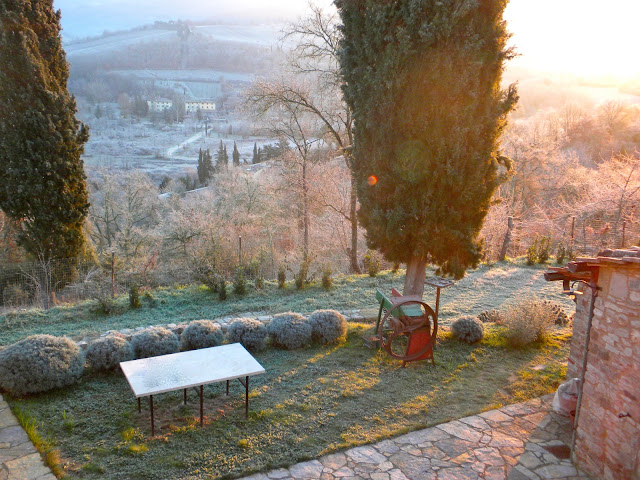a bird ballet
Two winters ago I was in the parking lot in Greve in Chianti towards dusk. A loud chirping and rush of wings made me look up at the darkening sky. Thousands of birds were streaming and wheeling above me, calling and settling on surrounding trees then rising again. I stood there fascinated, surprised that no one else seemed to bother with this scene. On asking a passerby what the birds were I was told "storni" which is starlings.Of course the locals see the birds every year, they are commonplace, like pigeons in the city. Still.
Just yesterday I was working near our vegie patch when a very sudden and loud gushing, whooshing noise from a little higher up the hill startled me. My first thought was of a mass of water released from a dam or pool. Of course we have no such thing, but that was precisely what it sounded like.
Seconds later a host of starlings rose into the air from behind a stand of trees. There must have been hundreds. As they wheeled and turned in the sky their wings whirred and almost sang.
Just today on the Italian paper il Corriere della Sera, this film was published, which I have tracked to YouTube. It doesn't reproduce the sounds I heard but it does record the extraordinary annual dance of the starlings.
Here is a reference from the International Business Times
which explains more ...
"...breathtaking phenomenon called
murmurations. This is when a huge flock of birds that are in migration form a
magical shape-shifting flight pattern in the sky. The birds tend to flock together for
protection and can reach speeds of up to 20 mph/32kph...Scientists aren't sure how the
starlings do their complex dance...the birds
have a quicksilver reaction time of under 100 milliseconds, which prevents them
from colliding with each other in the air."
This is another clip which apparently has gone 'viral'; it includes some scientific explanations of the starlings' startling steering abilities.
Here instead is a curiosity regarding one starling and Mozart. It appears that the birds are excellent mimics:
This is another clip which apparently has gone 'viral'; it includes some scientific explanations of the starlings' startling steering abilities.
Here instead is a curiosity regarding one starling and Mozart. It appears that the birds are excellent mimics:













































